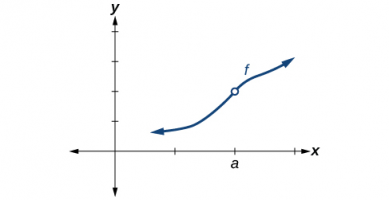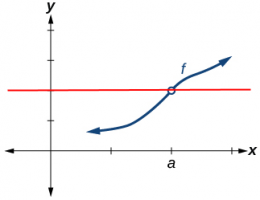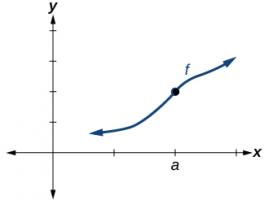Could someone please help me understand how the Continutiy Condition lim(x−>a)f(x)=f(a) implies that f(a) is defined.
Because one can clearly have a function that is discontinuous (image below) and have the Continuty Condition be true and the function will still be discontinuous in a!
Thanks to anyone that will help me, this has been eating me for the past couple days.

Because one can clearly have a function that is discontinuous (image below) and have the Continuty Condition be true and the function will still be discontinuous in a!
Thanks to anyone that will help me, this has been eating me for the past couple days.



